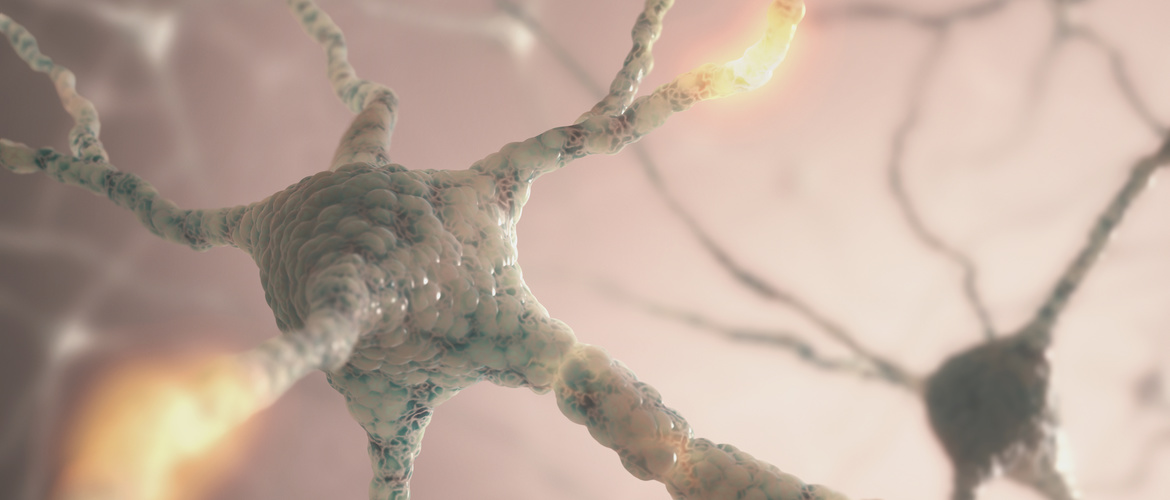
Choose a channel
Check out the different Progress in Mind content channels.

Progress in Mind

Post mortem evidence and connectome mapping show that the distribution of Lewy pathology does not match a simple model of prion-like spread of synuclein. Cellular gating mechanisms seem to underlie the vulnerability of certain neurons, believes James Surmeier (Northwestern University, Chicago, USA). If true, making susceptible neurons more like resistant neighbors could aid treatment.
Parkinson’s Disease is often described as having two defining features: the spread through the brain of the intracellular alpha-synuclein aggregates known as Lewy pathology, and neuronal death. The theory is one of Lewy pathology progressing through the connectome, causing degeneration, and hence closely linked to disease stage. The fact that fibrillar forms of alpha-synuclein do indeed spread when injected into the mouse brain gives the idea credibility.
However, James Surmeier (Northwestern University, Chicago, USA) – speaking at the Fox Foundation’s Therapeutics Conference -- argued that a simple model of prion-like spread is not consistent with the distribution of Lewy pathology in the brains of people with PD. In fact, only around a half of PD cases conform to this idea of Lewy body distribution and clinical staging.
The brain is not like a gas tank filling up with synuclein. If there is spread from cell to cell, it is governed by vulnerability factors
The standard model of spread predicts that Lewy pathology follows the connectome, ie synaptically coupled cells develop pathology in parallel while non-coupled cells do not. A second prediction is that pathology is governed by “nearest neighbors”. If your neighboring neuron has Lewy pathology, you will get it too – which is how typical prions work.
But neither idea seems to hold true. Dr Surmeier and colleagues mapped the connectome for at-risk populations of neurons in the mouse locus coeruleus and substantia nigra and found that cells with strong synaptic connections do not have a greater probability of Lewy pathology than cells with weaker connections. Cells in the cerebellum, for example, which have strong connectivity with the locus coeruleus never manifest Lewy bodies. And – no matter where they are -- GABAergic neurons almost never have Lewy pathology.
The nearest neighbor hypothesis seems also to be incorrect. There can be Lewy pathology in the dorsal motor nucleus of the vagus, but you do not see it in the hypoglossal or vestibular nucleus right next door. In contrast to the Braak map, the brain is not like a gas tank filling up with synuclein. We’re not saying there is no cell-to-cell spread. But, if there is spread, it is governed by permissive or vulnerability factors, Dr Surmeier argued.
The connectome does not predict the structures that manifest Lewy pathology
Neither the locus coeruleus nor the substantia nigra pars compacta show a prion-like pattern of Lewy pathology. For example, the substantia nigra pars reticulata, which abuts the compacta, is not susceptible to Lewy pathology. The same is true in the cortex. Lewy pathology in clinical PD is limited to limbic regions and does not spread into sensory areas.
Another issue is the relationship between Lewy pathology, cell death and symptoms. From the MPTP animal model, we know the ability to kill neurons in a model is no evidence of a central role in human pathogenesis. And what the human pathology reveals is a dramatic mismatch between cell death and Lewy pathology.
In early disease, for example, the only cell death is in the compacta. And this occurs before there is any Lewy pathology in this region of the brain. In the symptomatic phase, we begin to see cell death in parts of the pontine nucleus, the amygdala and the thalamus. Only later is there cell death in the medulla. These are not the same stages seen in the spread of Lewy pathology.
Neuronal degeneration, clearly linked to symptoms, evolves differently from Lewy pathology and must be governed by different mechanisms
Cellular context is important to pathology. Neurons differ greatly in form, function and physiology. Cells that are affected in PD have a similar phenotype. They have extraordinarily long axons, with highly branched axonal trees. They have a distinctive physiology, with slow pacemaking, and they flux lots of calcium. Elevated mitochondrial oxygen stress is implicated, and we know this can be related to pathogenesis. High levels of cytosolic calcium could also be a factor. Stress arising from reactive oxidant species can promote misfolding of alpha-synuclein and fibril formation.
Mitochondrial dysfunction is clearly linked to PD
If these ideas gain traction, the implication is that we should pursue therapies that make vulnerable cells more like those that are resistant. That might mean “normalizing” cellular physiology; and targeting calcium channels could be one such approach. This, Dr Surmeier suggested, is a lead worth pursuing.